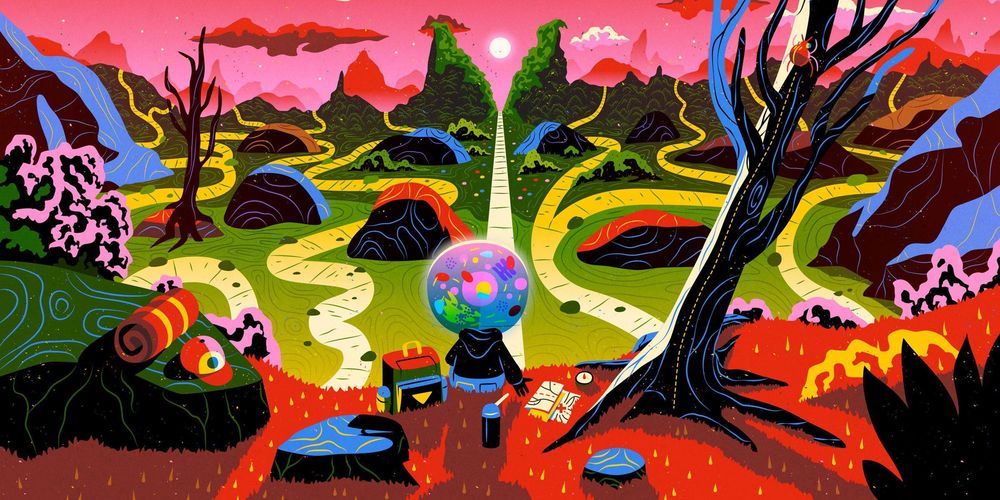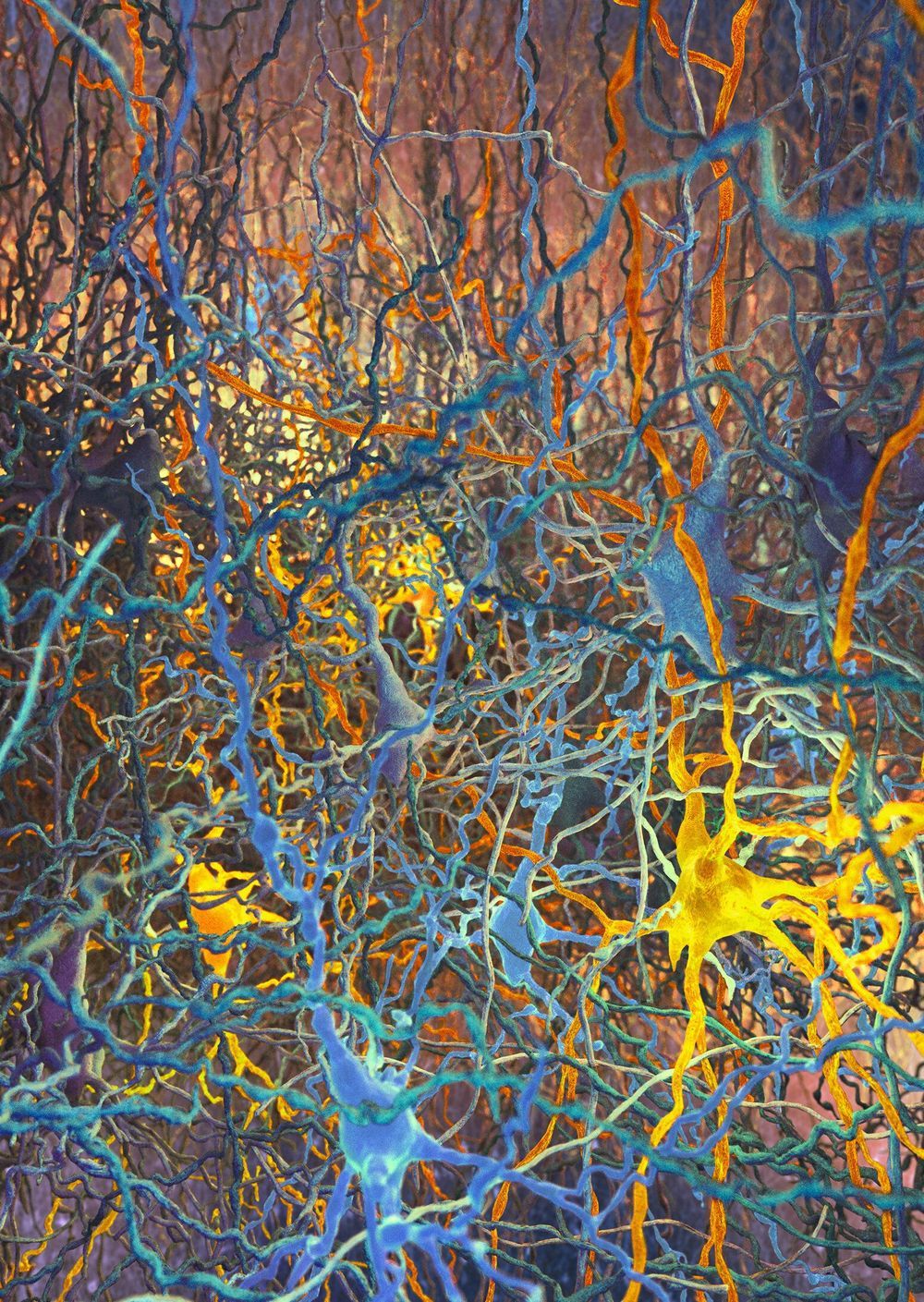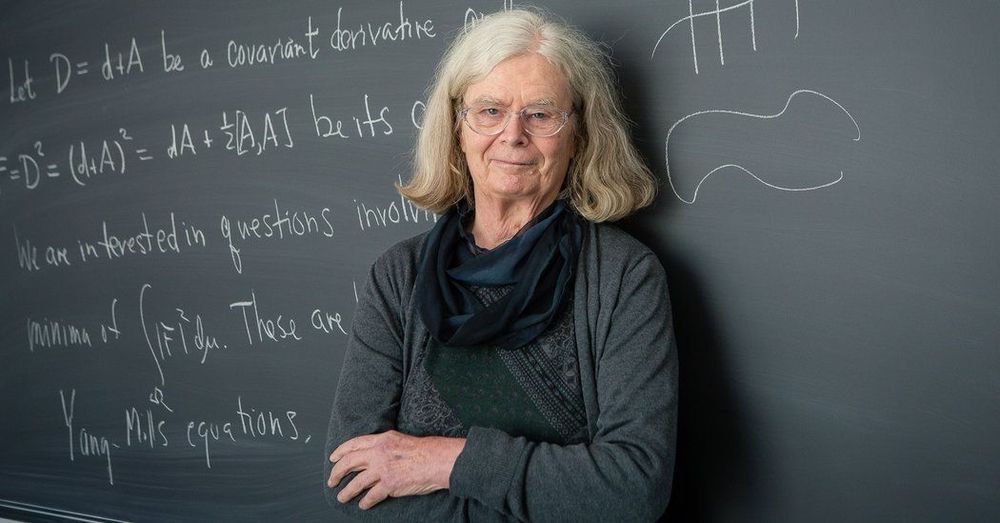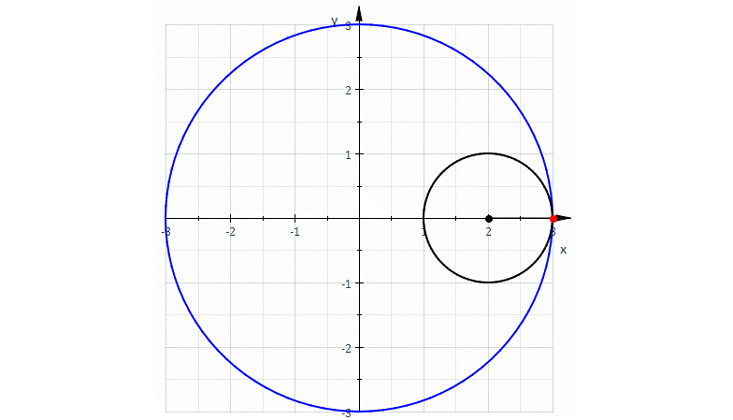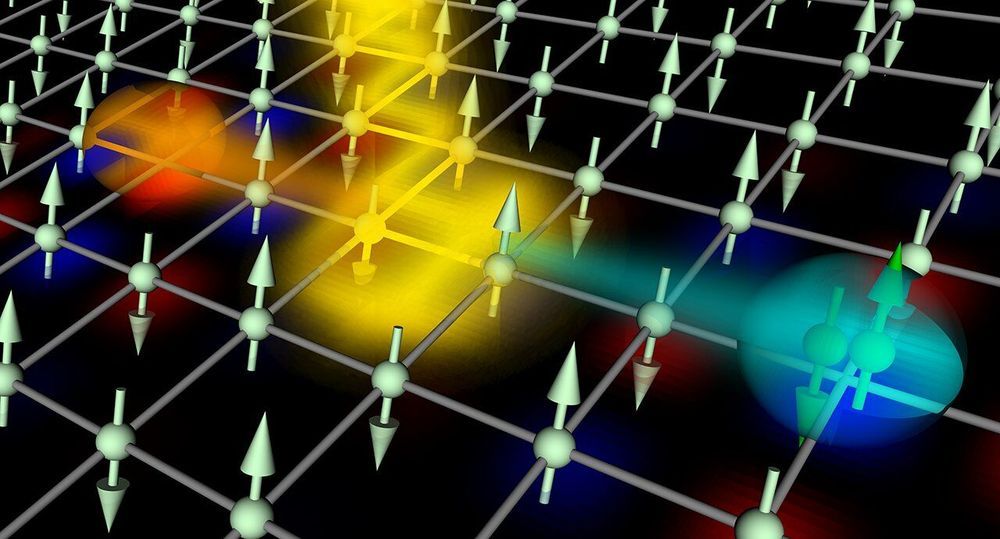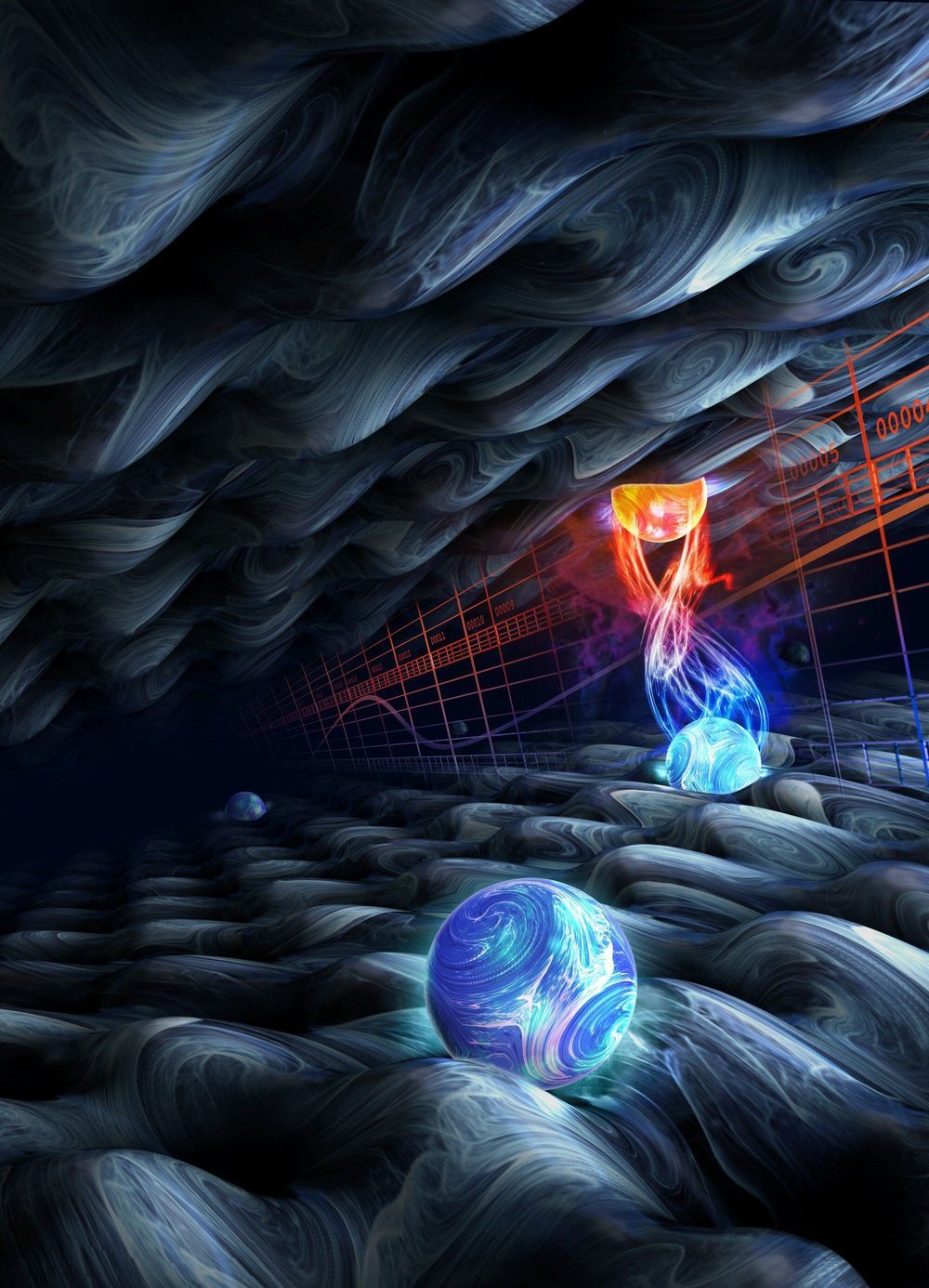Archive for the ‘mathematics’ category: Page 128
Mar 24, 2019
The Mysterious Math of How Cells Determine Their Own Fate
Posted by Genevieve Klien in category: mathematics
During development, cells seem to use statistics to figure out what identities they should take on.
Mar 23, 2019
Blue Brain solves a century-old neuroscience problem
Posted by Genevieve Klien in categories: information science, mathematics, neuroscience
A team led by Lida Kanari now reports a new system for distinguishing cell types in the brain, an algorithmic classification method that the researchers say will benefit the entire field of neuroscience. Blue Brain founder Professor Henry Markram says, “For nearly 100 years, scientists have been trying to name cells. They have been describing them in the same way that Darwin described animals and trees. Now, the Blue Brain Project has developed a mathematical algorithm to objectively classify the shapes of the neurons in the brain. This will allow the development of a standardized taxonomy [classification of cells into distinct groups] of all cells in the brain, which will help researchers compare their data in a more reliable manner.”
The team developed an algorithm to distinguish the shapes of the most common type of neuron in the neocortex, the pyramidal cells. Pyramidal cells are distinctively tree-like cells that make up 80 percent of the neurons in the neocortex, and like antennas, collect information from other neurons in the brain. Basically, they are the redwoods of the brain forest. They are excitatory, sending waves of electrical activity through the network, as people perceive, act, and feel.
The father of modern neuroscience, Ramón y Cajal, first drew pyramidal cells over 100 years ago, observing them under a microscope. Yet up until now, scientists have not reached a consensus on the types of pyramidal neurons. Anatomists have been assigning names and debating the different types for the past century, while neuroscience has been unable to tell for sure which types of neurons are subjectively characterized. Even for visibly distinguishable neurons, there is no common ground to consistently define morphological types.
Continue reading “Blue Brain solves a century-old neuroscience problem” »
Mar 21, 2019
Interactomics + Super (or Quantum) Computers + Machine Learning : the Future of Medicine?
Posted by Juliian C’estMoi in categories: biotech/medical, mathematics, quantum physics, robotics/AI
My latest blog entry: What is INTERACTOMICS, and how it could shape the future of Medicine in the 21st century?
Science / Math blog.
Mar 20, 2019
Founder of geometric analysis honored with Abel Prize
Posted by Derick Lee in category: mathematics
The Norwegian Academy of Science and Letters today announced that Karen Uhlenbeck has won the 2019 Abel Prize, a Nobel-level honor in math. Uhlenbeck won for her foundational work in geometric analysis, which combines the technical power of analysis—a branch of math that extends and generalizes calculus—with the more conceptual areas of geometry and topology. She is the first woman to receive the prize since the award of 6 million Norwegian kroner (approximately $700,000) was first given in 2003.
Karen Uhlenbeck is first woman to receive the honor.
Mar 19, 2019
Karen Uhlenbeck Is First Woman to Win Abel Prize for Mathematics
Posted by Genevieve Klien in categories: mathematics, particle physics, quantum physics
For the first time, one of the top prizes in mathematics has been given to a woman.
On Tuesday, the Norwegian Academy of Science and Letters announced it has awarded this year’s Abel Prize — an award modeled on the Nobel Prizes — to Karen Uhlenbeck, an emeritus professor at the University of Texas at Austin. The award cites “the fundamental impact of her work on analysis, geometry and mathematical physics.”
One of Dr. Uhlenbeck’s advances in essence described the complex shapes of soap films not in a bubble bath but in abstract, high-dimensional curved spaces. In later work, she helped put a rigorous mathematical underpinning to techniques widely used by physicists in quantum field theory to describe fundamental interactions between particles and forces.
Continue reading “Karen Uhlenbeck Is First Woman to Win Abel Prize for Mathematics” »
Mar 6, 2019
The Math That Takes Newton Into the Quantum World
Posted by Genevieve Klien in categories: information science, mathematics, quantum physics, transportation
In my 50s, too old to become a real expert, I have finally fallen in love with algebraic geometry. As the name suggests, this is the study of geometry using algebra. Around 1637, René Descartes laid the groundwork for this subject by taking a plane, mentally drawing a grid on it, as we now do with graph paper, and calling the coordinates x and y. We can write down an equation like x + y = 1, and there will be a curve consisting of points whose coordinates obey this equation. In this example, we get a circle!
It was a revolutionary idea at the time, because it let us systematically convert questions about geometry into questions about equations, which we can solve if we’re good enough at algebra. Some mathematicians spend their whole lives on this majestic subject. But I never really liked it much until recently—now that I’ve connected it to my interest in quantum physics.
If we can figure out how to reduce topology to algebra, it might help us formulate a theory of quantum gravity.
Continue reading “The Math That Takes Newton Into the Quantum World” »
Mar 5, 2019
Light pulses provide a new route to enhance superconductivity
Posted by Quinn Sena in categories: energy, mathematics
Under normal electron band theory, Mott insulators ought to conduct electricity, but they do not due to interactions among their electrons. But now, scientists from the RIKEN Cluster for Pioneering Research have shown that pulses of light could be used to turn these materials beyond simple conductors to superconductors—materials that conduct electricity without energy loss. This process would happen through an unconventional type of superconductivity known as “eta pairing.”
Using numerical simulations, the researchers found that this unconventional type of conductivity, which is believed to take place under non-equilibrium conditions in strongly correlated materials such as high-Tc cuprates and iron-pnictides, arises due to a phenomenon known as eta pairing. This is different from the superconductivity observed in the same strongly correlated materials under equilibrium conditions, and is thought to involve repulsive interactions between certain electrons within the structure. It is also different from traditional superconductivity, where the phenomenon arises due to interactions between electrons and vibrations of the crystal structure, inducing mutual interactions between electrons through vibrations and thus overcoming the repulsion between the electrons.
Thirty years ago, the mathematical physicist Chen-Ning Yang originally proposed the idea of eta-pairing, but because it was a purely mathematical concept, it was understood as a virtual phenomenon that would not take place in the real world. But for the present study, the researchers used non-equilibrium dynamics to analyze the effect of pulses of light on a Mott insulator, and found that the effect would in fact happen in the real world. “What is interesting,” says first author Tatsuya Kaneko, a postdoctoral researcher at the RIKEN Cluster for Pioneering Research, “is that our calculations showed that this takes place based on the beautiful mathematical structure that Yang and his followers formulated so many years ago.”
Feb 21, 2019
A philosopher argues that an AI can never be an artist
Posted by James Christian Smith in categories: mathematics, Ray Kurzweil, robotics/AI
Advances in artificial intelligence have led many to speculate that human beings will soon be replaced by machines in every domain, including that of creativity. Ray Kurzweil, a futurist, predicts that by 2029 we will have produced an AI that can pass for an average educated human being. Nick Bostrom, an Oxford philosopher, is more circumspect. He does not give a date but suggests that philosophers and mathematicians defer work on fundamental questions to “superintelligent” successors, which he defines as having “intellect that greatly exceeds the cognitive performance of humans in virtually all domains of interest.”
Creativity is, and always will be, a human endeavor.
Feb 19, 2019
Observation of quantized heating in quantum matter
Posted by Quinn Sena in categories: energy, law, mathematics, quantum physics
Shaking a physical system typically heats it up, in the sense that the system continuously absorbs energy. When considering a circular shaking pattern, the amount of energy that is absorbed can potentially depend on the orientation of the circular drive (clockwise/anti-clockwise), a general phenomenon known as circular dichroism.
In 2017, Nathan Goldman (ULB, Brussels), Peter Zoller (IQOQI, Innsbruck) and coworkers predicted that circular dichroism can be quantized in quantum systems (heating is then constrained by strict integers) forming a “topological state.” According to this theoretical prediction, the quantization of energy absorption upon circular driving can be directly related to topology, a fundamental mathematical concept that characterizes these intriguing states of matter.
Writing in Nature Physics, the experimental group of Klaus Sengstock and Christof Weitenberg (Hamburg), in collaboration with the team of Nathan Goldman, reports on the first observation of quantized circular dichroism. Following the theoretical proposal of Goldman, Zoller et al., the experimentalists realized a topological state using an ultracold atomic gas subjected to laser light, and studied its heating properties upon circular shaking of the gas. By finely monitoring the heating rates of their system, for a wide range of driving frequencies, they were able to validate the quantization law predicted by Goldman, Zoller et al. in 2017, in agreement with the underlying topological state realized in the laboratory.

